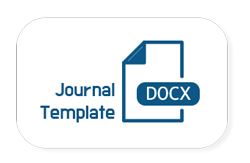Indigenous Religious Believers’ Experience to Manage Stigma in Indonesia
DOI:
https://doi.org/10.21111/ejoc.v8i1.9741Keywords:
management communication, stigma, indigenous religion, believer, identityAbstract
The state acknowledges the existence of indigenous religious believers, yet given the social stigma since considered primitive, heresy, and even atheist. The stigma given to the indigenous religious believers negatively results in personal and social relationships eventually influencing the believers’ life aspects. Thus, the stigma management communication strategies of the believers are essential when interacting with other people in their environments. This research depicts how indigenous religious believers manage the stigma of living in society. It was conducted in Banyumas, Central Java, Indonesia. The 28 groups of believers were listed on Majelis Luhur Kepercayaan Terhadap Tuhan YME (MLKI) of Banyumas. The study used a phenomenological approach. The data were collected through in-depth interviews with 10 participants from some communities of believers. Seventeen years participants were selected using a snowball sampling technique. The researchers then classified them into some categories based on the predetermined themes. The research finding showed that stigma limited the believers’ interactions with non-believers. In responding to these stigmas, the believers developed different management communication strategies: accepting, denying by providing information, denying by discrediting the discreditor, avoiding, reducing offensiveness, and ignoring.References
Ardiansyah, A. (2022). Konsep Diri Penghayat Kepercayaan Kepada Tuhan YME di Yayasan Cendekiaran Kampung Indonesia ( Studi Kasus Penerima Manfaat Program Beasiswa di Yayasan Cendekiawan Kampung Indonesia yang Beragama Penghayat Kepercayaan. Jurnal Riset Komunikasi, 12(1), 36–51.
Ashforth, B. E., & Kreiner, G. E. (1999). “How Can You Do It?â€: Dirty Work and the Challenge of Constructing a Positive Identity. The Academy of Management Review, 24(3), 413–434. https://doi.org/10.2307/259134
Boucher, K., & Kucinskas, J. (2016). “Too smart to be religious?†Discreet seeking amidst religious stigma at an elite college. Social Inclusion, 4(2), 40–51. https://doi.org/10.17645/si.v4i2.491
Budijanto, O. W. (2016). Penghormatan Hak Asasi Manusia Bagi Penghayat Kepercayaan Di Kota Bandung. Jurnal HAM, 7(1), 35. https://doi.org/10.30641/ham.2016.7.69
Chakim, S. (2022). A Review of Rituals and Local Wisdom of Indigenous Peoples in Indonesia. IBDA` : Jurnal Kajian Islam Dan Budaya, 20(2), 181–199. https://doi.org/10.24090/ibda.v20i2.6439
Creswell, J. W., & Creswell, J. D. (2018). Research Design Quantitative Qualitative and Mixmethod Research (5th ed.). Los Angeles: Sage Publication.
Creswell John W., & Poth Cheryl N. (2018). Qualitative Inquiry & Research Design: Choosing Among Five Approaches. London: Sage.
Findi, M. (2017). Memahami Penghayat Agama Leluhur dari Aspek Budaya. Satunama.Org.
Goffman, E. (1963). Stigma Notes on the Management of Spoiled Identity. Penguin Books.
Harnish, D. (2021). Tolerance of ambiguity: Negotiating religion and sustaining the lingsar festival and its performing arts in lombok, indonesia. Religions, 12(8). https://doi.org/10.3390/rel12080626
Jubba, H., Awang, J., Qodir, Z., Hannani, & Pabbajah, M. (2022). The contestation between conservative and moderate Muslims in promoting Islamic moderatism in Indonesia. Cogent Social Sciences, 8(1). https://doi.org/10.1080/23311886.2022.2116162
Khoirnafiya, S. (2020). Marginal Community and Their White Kebaya: Penghayat Sapta Darma and the Purity Discourse in Jakarta. Jurnal Antropologi: Isu-Isu Sosial Budaya, 22(2), 178. https://doi.org/10.25077/jantro.v22.n2.p178-186.2020
Kusnandar, V. B. (2021). Lebih dari 102 Ribu Penduduk Indonesia Menganut Aliran Kepercayaan pada Juni 2021. Katadata.Co.Id.
Levin, S., & Laar, C. Van. (2016). Stigma and Group Inequality: Social Psychological Perspectives. Psychology Press.
Major, B., & O’Brien, L. T. (2005). The social psychology of stigma. Annual Review of Psychology, 56(December), 393–421. https://doi.org/10.1146/annurev.psych.56.091103.070137
Meisenbach, R. J. (2010). Stigma management communication: A theory and agenda for applied research on how individuals manage moments of stigmatized identity. Journal of Applied Communication Research, 38(3), 268–292. https://doi.org/10.1080/00909882.2010.490841
Nurtjahyo, L. I. (2021). The issue of rights of religious freedom in some domestic violence cases in Indonesia. Religions, 12(9). https://doi.org/10.3390/rel12090733
Pasek, M. H., & Cook, J. E. (2019). Religion From the Target’s Perspective: A Portrait of Religious Threat and Its Consequences in the United States. Social Psychological and Personality Science, 10(1), 82–93. https://doi.org/10.1177/1948550617739089
Pescosolido, B. A., & Martin, J. K. (2015). The Stigma Complex. Annual Review of Sociology, 41, 87–116. https://doi.org/10.1146/annurev-soc-071312-145702
Pescosolido, B. A., Martin, J. K., Lang, A., & Olafsdottir, S. (2008). Rethinking theoretical approaches to stigma: A Framework Integrating Normative Influences on Stigma (FINIS). Social Science and Medicine, 67(3), 431–440. https://doi.org/10.1016/j.socscimed.2008.03.018
Putra, L. M. (2017). Sebetulnya, Berapa Jumlah Penghayat Kepercayaan di Indonesia? Kompas.Com.
Rohmawati, H. S. (2020). Kerokhanian Sapta Darma dan Permasalahan Hak-hak Sipil Penghayat di Indonesia. JURNAL YAQZHAN: Analisis Filsafat, Agama Dan Kemanusiaan, 6(1), 67. https://doi.org/10.24235/jy.v6i1.6156
Setiansah, M., Novianti, W., Rahmawati, A., & Agustina, L. (2021). Pengembangan Model Pendidikan Literasi Internet Pada Anak Melalui Pembentukan Kelompok Teman Sebaya Developing …. Jurnal PIKOM (Penelitian Komunikasi Dan Pembangunan), 22(2), 149–160.
Sugiyono. (2018). Metode Penelitian Kuantitatif, Kualitatif dan R&D. Bandung: Alfabeta.
UK Drug Policy Commission. (2010). Getting Serious about Stigma : the problem with stigmatising drug users An Overview. UK Drug Policy Commission, 1–14.
Downloads
Published
Issue
Section
License
Copyright (c) 2023 ETTISAL : Journal of Communication

This work is licensed under a Creative Commons Attribution-NonCommercial-ShareAlike 4.0 International License.
Copyright Notice
Authors retain full copyright and grant Ettisal: Journal of Communication the right of first publication. The published work is simultaneously licensed under a Creative Commons Attribution–NonCommercial–ShareAlike 4.0 International License (CC BY-NC-SA 4.0).
This license allows others to share and adapt the work for non-commercial purposes, provided proper credit is given to the author(s) and the journal, a link to the license is included, and any derivative works are distributed under the same license.
Additional Distribution Rights
Authors may enter into separate, non-exclusive agreements for the distribution of the journal’s published version of their work—such as depositing it in institutional repositories or including it in edited books—provided that the initial publication in Ettisal: Journal of Communication is acknowledged.
Pre- and Post-Publication Sharing
Authors are permitted and encouraged to share their work online (e.g., through institutional repositories, academic networking platforms, or personal websites) before, during, and after the submission process. Such practices promote scholarly exchange and can enhance the visibility and citation impact of the published work.
License Statement:
All articles published in Ettisal: Journal of Communication are licensed under the Creative Commons Attribution–NonCommercial–ShareAlike 4.0 International License (CC BY-NC-SA 4.0).







